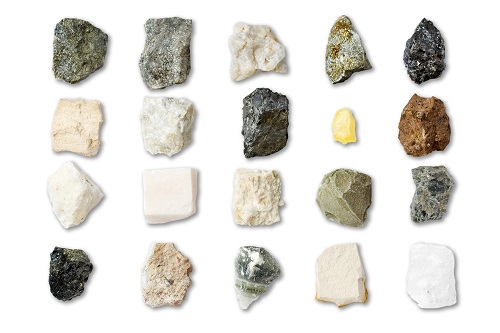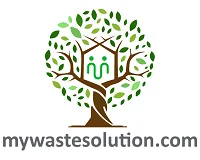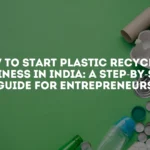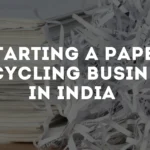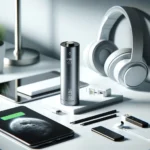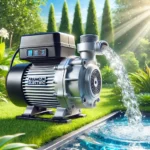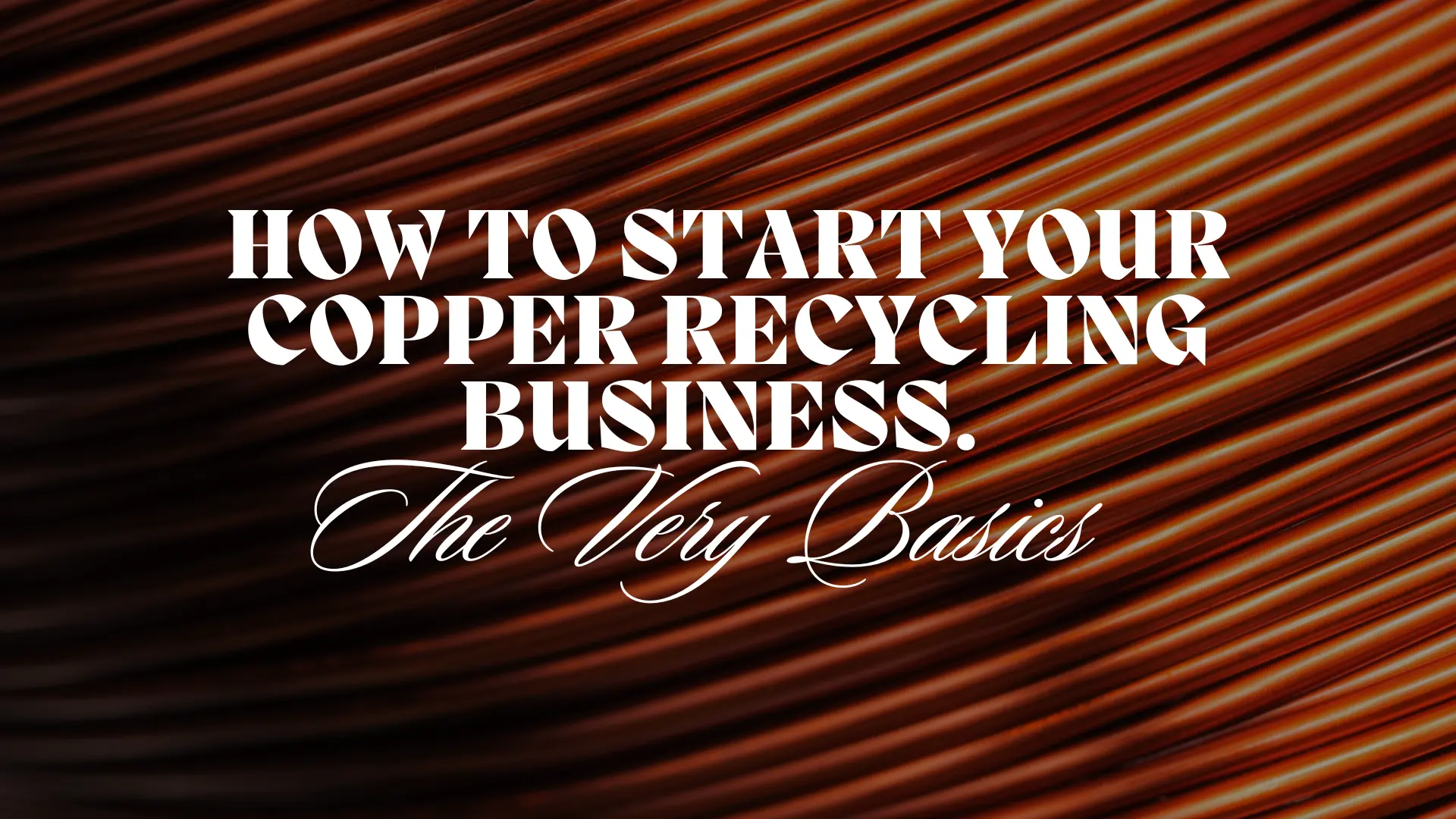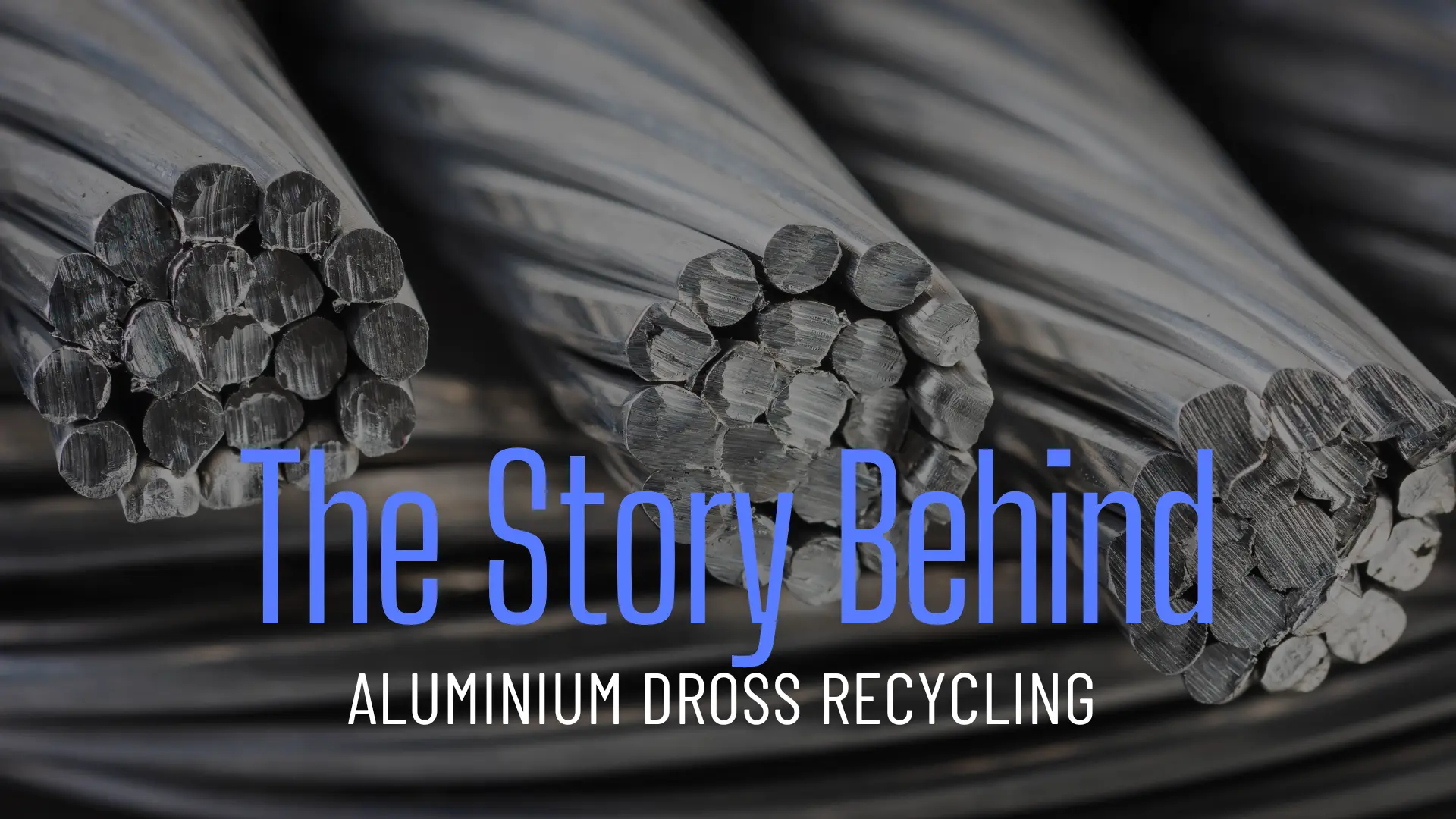Have you ever wondered what Mineral Recycling is all about? And more importantly how many minerals can be recycled? Give a thought on that, definitely it’s going to be worth it. There are many different things to learn about mineral recycling. So, let’s explore the blog and gain valuable knowledge about Mineral Recycling. Before that let’s have a look at the role of recycling in context to minerals.
What is Mineral Recycling?
Recycling Minerals + Innovative technology = Sustainable lifestyle
To answer this question you need to know about recycling first. In simple terms, recycling is the collection and separation of waste materials. Basically, we can say that products or materials which have reached the end of their useful life. In mineral recycling they are reprocessed to create usable and new products. Mineral recycling is a prime focus for management of waste or disposed minerals that contributes to minimise waste. When we talk about mineral recycling, it implies that we are collecting mineral waste and using them to make new material, instead of extracting new minerals from our mother earth.
But one question that can come up to you is why should we opt for Mineral Recycling? Why is it so important?
So here’s an answer to all your queries! Globalization is increasing day by day, which raises the demand for raw materials. Indirectly or directly it will affect the rate of extraction of minerals. So recycling minerals is the need of the hour today. Mineral Recycling saves energy, money, raw materials, and natural resources. It also helps to reduce landfill use and also save time required for extraction of valuable minerals. As demand for minerals is increasing rapidly, it is very important to see that not a bit of minerals are wasted. Particularly with increasing industrialization the role of mineral recycling becomes more important.
Here are some basic steps to follow for Mineral Recycling-
- Collection
- Sorting
- Processing
- Manufacturing
- Purchasing new product made from recycled materials
It’s important to note that, may these steps appear to you as easy. But in depth there are proper techniques to follow for each type of minerals. So let’s explore about 10 Minerals that can be recycled. Connect with our recycling consultants for efficient recycling of minerals.
10 Minerals that can be Recycle
Boost the circular economy through recycling minerals
1. Iron

No doubt how important iron is for the circular economy. So iron in its metallic state is rare in Earth’s crust. It is limited mainly to deposition by meteorites. But the positive part about it is we have Iron ores. They are most abundant in the Earth’s crust. Both the Earth’s inner and outer core, accounting for 35% of the mass of the whole Earth. You will be amazed to know that in construction material iron accounts for over 90% of worldwide metal production. It’s known for special characteristics that are low cost and high strength.
Explore Metal Scrap Solutions
Find top machinery, plants, tools, resources, companies, and consultancy for comprehensive Metal Scrap Recycling Solutions.
Applications of recycled iron mineral
- Construction, machinery tools
- Rails, automobiles, ship hulls, concrete reinforcing bars, and the load-carrying framework of buildings
- Alloy with elements to make steel.
- Protection from ionising radiation.
- Iron(III) oxide and oxyhydroxide are used as reddish and ocher pigments
- Iron(III) chloride finds use in water purification and sewage treatment.
- In the dyeing of cloth, as a colouring agent in paints
- Manufacture of printed circuit boards
Recycling of iron
Although extracting usable metal from iron ore requires furnaces. Which reaches 1,500 °C or about 500 °C higher. Iron can be recycled by metal cuttings. In fact disposed or not used iron products are recycled by remelting, recasting, and redrawing entirely within the mill. Obviously, this process is much cheaper than producing new metal from the extracted ore. Besides this most iron and steel industries produce their own coke. Further, by processing coke we get by-products from the coke oven which are valuable organic compounds. Hydrogen sulphide, and ammonia, these are organic compounds that are purified and sold. Other than this we can also get the ammonia. Which is sold as an aqueous solution. Or it can be combined with sulfuric acid to form ammonium sulphate. This is subsequently dried and sold out in the market as fertilizer. So, there are many options open for us when we start with recycling iron.
2. Aluminum

When we think of aluminium, instantly we get a visual of aluminium foils that we use in kitchens. But besides this aluminium has great importance in today’s industry. They are much more than kitchen use. It stands 7th in the abundance metal list. It’s interesting to know that aluminium occurs in greater proportion in the Earth’s crust than in the Universe. Reason is quite obvious, because aluminium easily forms the oxide. Then further bound into rocks and stays in the Earth’s crust. In the Earth’s crust, aluminium is the most abundant metallic element that is 8.23% by mass. In contrast, the Earth’s mantle is only 2.38% aluminium by mass.Aluminium also occurs in seawater at a concentration of 2 μg/kg.The global production of aluminium in 2016 was 58.8 million metric tons.
Applications of recycled aluminium mineral
- Automobiles industry
- Packaging
- Construction
- Electrical devices
- Conductor alloys
- Motors and generators, transformers, capacitors
- Household products from cooking utensils to furniture
- Machinery and equipment
- Portable computer cases
Recycling of aluminium
Similar to many other minerals aluminium is also an infinitely recyclable material. It takes up to 95% less energy to recycle it than to produce primary aluminium from ore. Today, about 75% of all aluminium produced in history, nearly a billion tons, is still in use. For recycling aluminium, we can process scrap aluminium and reuse it. The process involves simply re-melting the metal. Clearly, it is less expensive and energy-intensive. Whereas creating new aluminium through the electrolysis of aluminium oxide takes more energy. Which first must be mined from bauxite ore. Then refined into aluminium oxide. This is called the Bayer process. Then finally refined again into aluminium metal using the Hall–Héroult process. Now you can think how time consuming this process would be. So it’s quite a sensible decision to choose recycling rather than extracting it from new ore. For efficient recycling of aluminium, our aluminium waste consultants are here to help you, connect now!
Used beverage containers are the largest source of processed aluminium scrap. Most scrap cans are manufactured back into aluminium cans. In fact, Brazil recycles 98.2% of its aluminium can production, equivalent to 14.7 billion beverage cans per year,ranking first in the world. Aluminium is almost always alloyed, which markedly improves its mechanical properties. In fact, the common aluminium foils and beverage cans are alloys of 92% to 99% aluminium. Main alloying agents are copper, zinc, magnesium, manganese, and silicon with a few percent by weight. Currently, it is rarely used without alloying. But aluminium can be recycled and obtained clean aluminium, as it has residual market value. For example, the used beverage can be used to encase the electronic components of MacBook Air laptop, Pixel 5 smartphone or Summit Lite smartwatch.
3. Copper

Copper is one of those minerals that can occur in nature directly in usable metal form. We can also say it as native metal.
In fact, copper is also the first metal to be purposely alloyed with another metal,tin, to create bronze, around 3500 BC.Most copper is mined or extracted as copper sulphides from large open pit mines in porphyry copper deposits. Which contain 0.4 to 1.0% copper. Sites include Chuquicamata, in Chile; Bingham Canyon Mine, in Utah; United States.
Applications of recycled copper mineral
- Wire and cable
- Electronic devices
- Utensils
- Architecture- Wall decor
- Renewable energy sources such as solar, wind, tidal, hydro, biomass, and geothermal have become significant sectors which demand for copper
- Antibiofouling
- Antimicrobial
- Folk medicine
Recycling of copper
Nowadays copper is a very trending mineral. Copper demand is rising day by day, and recycling is the best way to use these valuable minerals. We can recycle copper without compromising it’s quality. In volume, copper is the third most recycled metal after iron and aluminium.You will be amazed to know that around 80% of all copper ever mined is still in use today. The International Resource Panel’s Metal Stocks in Society report, says that the global per capita stock of copper in use in society is 35–55 kg. The process of recycling copper is roughly the same as is used to extract copper but requires fewer steps. High-purity scrap copper is melted in a furnace and then reduced and cast into billets and ingots. Also, through electroplating we can refine lower purity scrap in a bath of sulfuric acid. So, copper recycling is beneficial in any way.
Struggling with mineral recycling issues? Connect with top consultants specialising in Mineral Recycling.
Connect Now4. Zinc

So, zinc is the 24th most abundant element in Earth’s crust. It has five stable isotopes. The most common zinc ore is sphalerite zinc blende, a zinc sulphide mineral. Worldwide, 95% of new zinc is mined from sulfidic ore deposits, in which sphalerite (ZnS) is nearly always mixed with the sulphides of copper, lead and iron. The largest workable units are present in Australia, Asia, and the United States. Zinc is refined by froth flotation of the ore, roasting, and final extraction is using electricity- electrowinning.
Applications of recycled zinc mineral
- Anti-corrosion for batteries
- Galvanization
- Used cathodically to protect metals that are exposed to seawater.
- Zinc plug attached to a propeller or the metal protective guard for the ship to provides temporary protection
- Zinc alloy-brass, in which copper is alloyed with 3% to 45% zinc
- Corrosion resistance so useful in communication equipment, hardware, musical instruments, and water valves
- Dietary supplements
- Industrial uses
Recycling of zinc
Zinc is recyclable “non-ferrous” metal. At present, approximately 70% of zinc comes from mining and the remaining 30% comes directly by recycling zinc. The life of zinc containing products is variable. It can range from 10 to 15 years for cars or household appliances. And it’s over 100 years for zinc sheets used for roofing! For example, zinc coated steel poles placed in Australia are 100 years ago. You will be surprised to know that they are still in excellent condition. Also you might have clicked with a question if zinc and steel come together so will it be difficult for us to recycle it and to get seperate out these minerals? In fact, the presence of zinc coating on steel does not restrict steel’s recyclability or vice-versa. All types of zinc-coated products are recyclable. Zinc coated steel is recycled along with other steel scraps during the steel production process.The zinc is volatilized and is then recovered.The supply of zinc-coated steel scrap is expected to double over the time. As we can see, the more zinc-coated vehicles enter, the more we grow in recycling.
Material Circularity Indicator (MCI) for zinc in its function as corrosion protection for steel (galvanised steel) using the EllenMcArthur dynamic modelling tool as function of recycled content (RC) and durability (life span) compared to paint.
Find and connect with leading companies specialising in Metal Scrap Recycling solutions.
Get Connected Today
5. Lead

Lead is an unreactive metal. But it doesn’t mean that lead is less important for us. Its weak metallic character is illustrated by its amphoteric nature; lead and lead oxides react with acids and bases, and it tends to form covalent bonds.Lead is classified as a chalcophile under the Goldschmidt classification. It simply means it is found combined with sulfur.It rarely occurs in its native, metallic form. Many lead minerals are relatively light and have remained in the crust instead of sinking deep into the Earth’s interior. This accounts for lead’s relatively high crustal abundance of 14 ppm. It is the 38th most abundant element in the crust. Lead is easily extracted from its ores. Galena is a principal ore of lead. Lead production increased after the Industrial Revolution. World lead resources exceeded two billion tons. Significant deposits are located in Australia, China, Ireland, Mexico, Peru, Russia, and the United States. Global reserves resources report says that lead extraction in 2016 totaled 88 million tonnes. Countries which contribute are, Australia 35 million, China 17 million, and Russia 6.4 million.
Applications of recycled Lead mineral
- Construction
- Plumbing
- Batteries
- Bullets and shot
- weights
- Fusible alloys
- White paints
- Leaded gasoline
- Radiation shielding
Recycling of Lead
Batteries are the soul of any electronic device. But have you ever wondered how these batteries are made? So, an estimated 85% of lead we use today goes into batteries, mostly for automobiles. And when the batteries are disposed out, 99% of this lead is recycled to make new batteries. The business is so universal because it is very profitable. Many smelting enterprises around the world are seeking to collect an abundant supply of used batteries to turn into new products. The secondary lead production processes are quite similar to primary lead productions. Some primary production plants now also start recycling operations with scrap lead. With proper techniques, lead obtained via secondary processes is indistinguishable from lead obtained via primary processes. Scrap lead from the construction site is usually fairly clean and is re-melted. Process is carried out without the need for smelting. Although, refining is sometimes needed. Secondary lead production is therefore cheaper, in terms of energy requirements, than is primary production, often by 50% or more.
6. Lithium

Lithium is widely distributed on Earth. As you know lithium is highly reactive, so it does not naturally occur in elemental form. The total value of lithium in seawater was estimated as 230 billion tonnes. Whereas the elemental form exists at a relatively constant concentration of 0.14 to 0.25 parts per million (ppm), or higher concentrations approaching 7 ppm are found near hydrothermal vents. The Earth’s crustal lithium content ranges from 20 ppm to 70 ppm by weight. Lithium constitutes about 0.002% of Earth’s crust. Lithium forms a minor part of igneous rocks, with the largest concentrations in granites. Granitic pegmatites also provide the greatest abundance of lithium containing minerals, with spodumene and petalite being the most commercially viable sources. So it is mined from ores of petalite, lepidolite, spodumene and also subsurface brines. So the largest producers of lithium are Australia and Chile
Applications of recycled Lithium mineral
- Ceramics and glass, in primary aluminium production
- Manufacture of lubricants and greases, rocket propellants
- A synthesis, underwater buoyancy devices
- Batteries- More than 50% of lithium mined is used in batteries.
- Lithium is mixed with other light metals such as aluminium and magnesium to form strong, light-weight alloys
- Medicine to treat gout and to treat serious mental illness.
Recycling of Lithium
Lithium batteries majorly contribute towards recycling lithium. One of the interesting things about lithium batteries is that they are smaller and lighter when compared to other types of batteries. But it is capable of holding the same amount of energy. This allowed for a rapid increase in the consumer adoption of smaller portable products. These batteries are used in many products such as electronics, toys, wireless headphones, electric vehicles and electrical energy storage systems. If lithium batteries are not properly managed, they can cause harm to the environment. At the end of it’s useful life, lithium batteries end up in the trash. But we need to remember that these batteries are valuable and recyclable. Due to technical, economical, and other factors, less than 5% lithium batteries are recycled today. Many large pyrometallurgy and smelting facilities are aimed to recycle Li-ion batteries today. These units,which often run near 1,500 °C, recover cobalt, nickel, and copper. But not lithium, aluminium, or any organic compounds, which get burned. Hydrometallurgy processing, or chemical leaching, which is practised commercially in China.These processes for extracting and separating cathode metals generally run below 100 °C and can recover lithium and copper in addition to the other transition metals. One downside of traditional leaching methods is the need for caustic reagents such as hydrochloric, nitric, and sulfuric acids and hydrogen peroxide.Currently, researchers are running bench-scale studies that have identified potential improvements to these recycling methods. But only a handful of companies run recycling tests on the methods prescribed. In Vancouver, an American Manganese facility converts 1 kg/h of cathode scrap to a precursor. That manufacturers can use to synthesise fresh cathode material. Note that here scrap refers to cathode powder, trimmings, and other waste collected from battery manufacturing.

Explore the Best Metal Scrap Recycling Machinery and Plants for your Industrial Needs.
Connect Today7. Silica

Also called silica sand or quartz sand. Silica is silicon dioxide (SiO2). Silicon compounds are the most significant component of the Earth’s crust. Sand is the primary ore source of silicon. As you guys know, sand is plentiful. So it becomes easy to mine and relatively easy to process. The other source for silica is metamorphic rock, quartzite. Silicon dioxide is most commonly found in nature as quartz, which comprises more than 10% by mass of the earth’s crust. Silicon is semi-metallic, as it has several of the metallic characteristics. Silicon is never found in its natural state. But it is found in combination with oxygen as the silicate ion in silica rich rocks such as obsidian, granite, diorite, and sandstone.Silicon alloys include a variety of metals, including iron, aluminium, copper, nickel, manganese and ferrochromium.
Applications of recycled Silica mineral
- Industrial applications in abrasives and polishes
- In glass manufacturing
- Fillers and extenders
- Silica brick manufacturing
- As a catalyst
- In specialty coatings, cleaners ceramics, electronics optics, and refractories
- Ferro-silicon manufacturing and rubber
Recycling of Silica
An efficient and economic approach is proposed for the fast and direct recovery of silica materials from photonic waste powder. This method possesses advantages of rapid and low energy consumed processes with total recovery yield. The obtained mesoporous silica material was recovered directly from photonic waste powder at room temperature with the assistance of cationic surfactant, hydrofluoric acid and ammonia hydroxide. The recycled silica with a high specific surface area (788 m2/g), ordered mesoporous structure (4.5 nm), and large pore volume (1.1 cm3/g) was utilised as support of tetraethylenepentamine (TEPA) for the capture of CO2 from a gas stream. The results demonstrated that it had an adsorption capacity of 120 mg-CO2/g adsorbent. This novel recycling process improves cost effectiveness for the mass production of valuable mesoporous silica materials and is surely beneficial from the viewpoint of economical use of photonic industrial waste powder. A very interesting fact about recycling silica is that recovery of silica can also be done by rice straw and husk. Surprisingly, very few are aware about it.
8. Potash

Potash is produced worldwide in amounts exceeding 90 million tonnes per year Mostly for use in fertiliser. Many kinds of fertilisers containing potassium are of great industrial importance. Potassium was first derived in 1807 by electrolysis of caustic potash. Which is also known as potassium hydroxide. Most potash mines today are deep shaft mines as much as 4,400 feet (1,400 m) underground. Others are mined as strip mines. That means, these mines have been laid down in horizontal layers as sedimentary rock. In above-ground processing plants, the KCl is separated from the mixture to produce a high-analysis potassium fertiliser.
Applications of recycled Potash mineral
- Potash is primarily used in fertilisers (approximately 95%) to support plant growth, increase crop yield and disease resistance, and enhance water preservation.
- Detergents
- Ceramics
- Pharmaceuticals
- Water conditioners
- Alternatives to icing salt
- It is essential for growth and the maintenance of tissues, muscles and organs
Recycling of Potash
One of the oldest mining techniques for potash production, solar solution mining. This is one of the safest, lowest cost, most energy efficient and environmentally friendly production methods. A naturally occurring salt saturated brine solution and injects it underground where the brine dissolves the potash. This potassium rich brine is then pumped up into solar ponds. Using the solar heat, wind and warm temperatures the water evaporates leaving only the salt and potash behind. Next it needs to be processed into the products and then sold. Mining potash requires water resources. When this water is not fully utilised by the mining operation, you are able to reuse this water in other industries such as the oil and gas industry. Potash fertilisers come directly from the earth and are simply recycled through very long geological processes.
9. Graphite

When we think of graphite, the instant image of pencil strikes our mind. But where does this graphite come from? So, graphite occurs in metamorphic rocks. It also occurs in igneous rocks and in meteorites.Minerals associated with graphite include calcite, micas and tourmaline. Graphite also occurs in meteorites with troilite and silicate minerals. Graphite may be the second or third oldest mineral in the Universe. Graphite is mined by both open pit and underground methods.This may be carried out by hand-picking the pieces of gangue rock. Or can be hand-screening the product or by crushing the rock and floating out the graphite. The United States Geological Survey (USGS), says that world production of natural graphite in 2016 was 1,200,000 tonnes. In which the major exporters are: China, India, Brazil, Turkey, and North Korea.
Applications of recycled Graphite mineral
- Writing Materials
- Lubricants
- Refractory
- Nuclear Reactors
- Batteries
- Graphene Sheets
Recycling of Graphite
Graphite recycling occurs when synthetic graphite electrodes are manufactured. Or can be cut off and discarded for reuse. It can be reused to make electrodes or other materials. Simply, a new electrode replaces the old one. But it may be possible that for some time the electrode size may vary. Then in that case this is crushed and sized, and the resulting graphite powder. And then finally used to raise the carbon content of molten steel.Graphite containing refractories are sometimes also opted for recycling. But often due to their low graphite content in such a large-volume item, such as carbon-magnesite bricks. These bricks contain only 15–25% graphite, usually containing too little graphite to be worthwhile to recycle. However, some recycled carbon–magnesite brick is used as the basis for furnace-repair materials. Also crushed carbon–magnesite brick is used in slag conditioners. Next, crucibles that are commonly used in laboratories. It has a high graphite content, the volume of crucibles used and then recycled. A high quality flake graphite product that closely resembles natural flake graphite can be made from steelmaking kish. Kish in a large volume, near molten waste skimmed from the molten iron feed to a basic oxygen furnace. This consists of a mix of graphite that precipitated out of the supersaturated iron, lime-rich slag, and some iron. The iron is recycled on-site, leaving a mixture of graphite and slag. The best recovery process uses hydraulic classification. Which utilises a flow of water to separate minerals by specific gravity: graphite is light and settles nearly last. This process helps us to get a 70% graphite rough concentrate. Leaching this concentrate with hydrochloric acid gives a 95% graphite product. Generally this flake size ranges from 10 mesh down.
Struggling with Heavy Metal Pollution Issues? Connect with Top Metal Waste buyers and sellers here.
Buyer Listings Seller Listings10. Feldspar

Feldspars are a group of rock-forming aluminium tectosilicate minerals. It contains sodium, calcium, potassium or barium.The two most common members of the feldspar group are- first the plagioclase (sodium-calcium) feldspars and second the alkali (potassium-sodium) feldspars. Feldspars make up about 60% of the Earth’s crust,and 41% of the Earth’s continental crust by weight.
Applications of recycled Feldspar mineral
- Glassmaking- alumina from feldspar improves product hardness, durability, and resistance to chemical corrosion
- Ceramics
- Filler
- Extender in paint
- Plastics rubber
Recycling of Feldspar
Most feldspar producing countries are Italy, Turkey and China. Feldspars crystallised from magma as both intrusive and extrusive igneous rocks. Sometimes they are also present in many types of metamorphic rock. Anorthosite is the rock formed almost entirely of calcic plagioclase feldspar. Feldspars are also found in many types of sedimentary rocks too. So occurrence of Feldspar in such rocks can help us to guide recycling methodologies. In ceramics, the alkalis in feldspar act as a flux, lowering the melting temperature of a mixture. Fluxes melt at an early stage in the firing process, forming a glassy matrix that bonds the other components of the system together. In the US, about 66% of feldspar is consumed in glassmaking, including glass containers and glass fibre. Ceramics that have a very high feldspar content. It can be sourced as electrical insulators, sanitary ware, pottery, tableware, and tiles, etc can be reused again once they are disposed of in trash.
Conclusion
“Save natural resources for future generations”
Now you have learned how these minerals can be recycled. As every mineral is different, recycling techniques for different minerals are also varying. But, at the end of a day, the end result we get by recycling is valuable. We not only save money, time but also our energy. We also contribute toward the environment and fulfil our responsibility towards our society. I agree that mining practice is necessary for the supply of products that we often use daily. But to some extent, we can avoid such practices to save our environment. Hence, we should opt for mineral recycling for a sustainable lifestyle.
